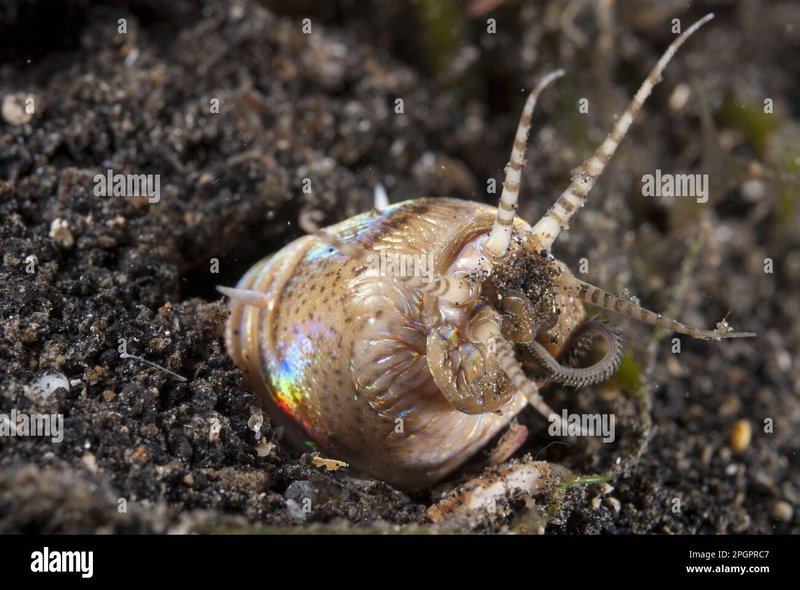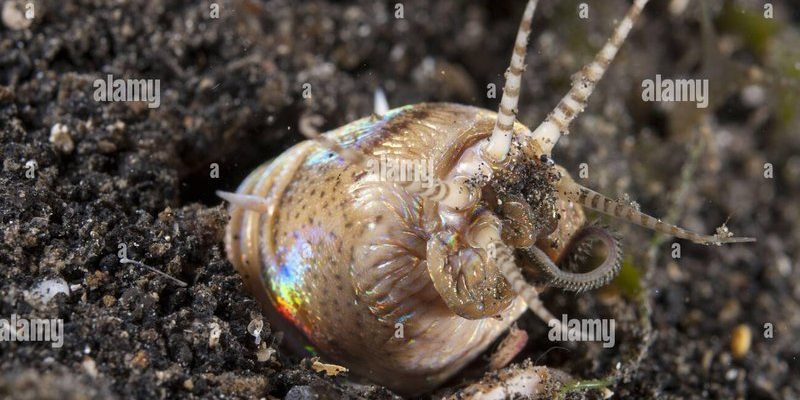
Bobbit worms are named for their sharp, scissor-like jaws that can snap shut in the blink of an eye. They’re no ordinary worms; they’re stealthy hunters that have a knack for ambushing their prey while remaining hidden in the sand or the reef. Understanding their **nocturnal feeding patterns** gives us a glimpse into their behavior, their role in the ecosystem, and the beauty of life beneath the waves.
What Are Bobbit Worms?
Bobbit worms, belonging to the family **Euniceidae**, can grow up to ten feet long, though most are shorter. These fascinating creatures are often found buried in sandy or muddy substrates, with just their colorful heads peeking out. If you’re familiar with a baby’s arm sticking out of a crib, that’s kind of what it looks like when a Bobbit worm is waiting for dinner.
They come in various colors, including green, brown, and vibrant red, which helps them blend into their environment. Their bodies are made up of segments called **metameres**, which allow them to move flexibly through their sandy homes. At the front, they have long, sensitive antennae that help them detect vibrations in the water—like an artist with a brush, they feel their way around.
What’s even more interesting is their hunting technique. Bobbit worms are ambush predators. They don’t roam around looking for food; instead, they lie in wait, ready to strike when fish or other small creatures come too close.
How Do Bobbit Worms Hunt at Night?
You might be asking, why nocturnal? Well, like many predators, Bobbit worms take advantage of the cover of darkness. At night, the ocean becomes a playground of movement, and smaller creatures are more active, making it easier for the worm to hunt.
During the night, these worms will extend their bodies and antennae out of their hiding spots, sensing the water’s movement. They’re listening. If a curious fish swims by, the Bobbit worm can launch itself at incredible speeds to snatch it up. The **snap** of their jaws is so fast that it’s like watching a magician’s quick hand trick. You barely realize what happened until it’s too late for the fish.
It’s a fascinating dance of life and death that plays out beneath the waves, highlighting the complex interactions within marine ecosystems. For a species that spends so much time hidden away, their nocturnal feeding patterns showcase just how powerful and effective they can be as predators.
The Role of Bobbit Worms in the Ecosystem
Bobbit worms play a crucial role in their underwater environments. They help maintain the balance in marine life by acting as both predator and prey. Not only do they keep populations of smaller fish in check, but they are also food for larger animals. Think of it like a chess game—each piece has its own role to play.
By consuming dead or decaying organic matter alongside live prey, they contribute to the process of nutrient recycling in their habitat. They help break down materials, aiding in decomposition, which is essential for the health of the ecosystem.
However, with their unique hunting methods, they can also impact the populations of species they prey upon. It’s a delicate balance, and Bobbit worms are essential players in maintaining that balance.
Common Misconceptions About Bobbit Worms
There’s quite a bit of mystery surrounding Bobbit worms, leading to some misconceptions. For instance, some people believe that all worms are harmless, but this is not the case here. Bobbit worms are not your garden-variety earthworms; they’re fierce predators with a highly developed hunting strategy.
Another misconception is that these worms are not important in their ecosystems. Many underestimate their role, thinking they are just bizarre-looking creatures waiting to ambush fish. In reality, they are important contributors to the health of the marine environment and should be appreciated for their unique adaptations.
Many enthusiasts and scientists study Bobbit worms not only for their unique feeding patterns but also to understand broader ecological dynamics. It’s like discovering unexpected treasures in an old attic; you never know what insights you might find!
How Do Bobbit Worms Adapt to Their Environment?
Adaptation is key to survival, and Bobbit worms have developed some remarkable traits to thrive in their environments. Their long, segmented bodies allow for flexible movement, which is essential for both hunting and burrowing. This flexibility means they can navigate through tight spaces in the sand, making it harder for predators to spot them.
Moreover, their ability to sense vibrations through their antennae is crucial. These sensory organs help them pick up on movement in the water, signaling potential prey. Just imagine having a sixth sense that alerts you to every little thing around you—that’s how it feels for a Bobbit worm.
Their coloration also serves a dual purpose: camouflage and communication. The vibrant hues make them less visible against the reef or sand, while bright colors may play a role in attracting mates. It’s nature’s way of making sure they’re not just survivors but also thrivers!
Are Bobbit Worms Dangerous to Humans?
Most people wonder if these unusual creatures pose a threat to humans. The truth is, Bobbit worms are not dangerous to us in the traditional sense. They’re not aggressive unless provoked. However, their jaws are strong, and a bite would hurt—think of it like a sharp pinch from a crab.
Most encounters happen when divers or snorkelers inadvertently disturb them. If you see one, it’s best to admire it from a distance. Remember, they’re just doing their thing, waiting for dinner like all of us do.
In the grand scheme of things, Bobbit worms are merely a part of the rich tapestry of ocean life. They may be fearsome predators in their world, but to us, they’re more like oceanic mythological creatures—mysterious, intriguing, and certainly worth learning about.
Bobbit worms are truly captivating creatures that remind us of the wonders beneath the ocean’s surface. With their nocturnal feeding patterns, unique adaptations, and significant roles in marine ecosystems, they open our eyes to the intricate web of life in the sea.
So the next time you think about ocean life, don’t just picture dolphins or sea turtles. Remember the Bobbit worm, waiting in the shadows, ready to strike, embodying the raw and beautiful complexity of nature. They may not be the most cuddly creatures, but their story is just as important—a testament to the diverse lives that share our planet.

